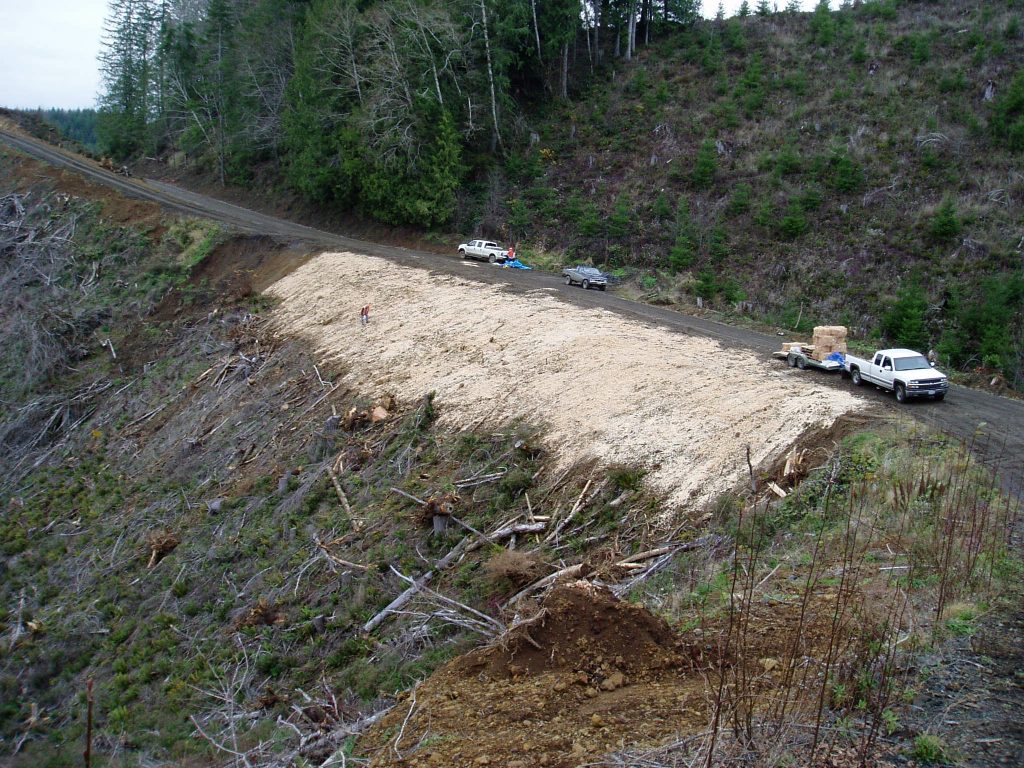Abstract
Two blends of manufactured wood strands with different lengths were tested for effectiveness in controlling erosion. Wood strand blends were tested on two soils, two slopes, and at three coverage amounts. Laboratory rainfall simulations were conducted to evaluate runoff and sediment loss. Wood strands were effective in delaying runoff, reducing runoff volume, and reducing sediment loss. There was no statistically significant difference between the two wood strand blends with respect to runoff or sediment loss. In comparison to bare soil with no cover, sediment loss was reduced by at least 70 percent for all cover amounts tested and among each soil type, slope and flow event. In comparison to estimates of sediment loss reductions due to agricultural straw (Burroughs and King, 1989), wood strand materials were equally effective on coarse grained soils and superior to straw on fine grained soils. In contrast to agricultural straw, manufactured wood strands are inherently weed and pesticide free. Consequently, wood-based materials may be a more appropriate material for erosion mitigation, especially in areas where introduction of non-native species is of great concern.
About the Publication
Yanosek, K.B., R.B. Foltz, and J.H. Dooley. 2006. Performance and assessment of wood strand erosion control materials among varying slopes, soil textures, and cover amounts. Journal of Soil and Water Conservation 61(2):45-51.
Read the full article in PDF format:

